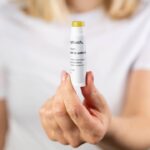When it comes to skincare, one of the most critical steps you can take is applying sunscreen. You might think that skipping this step is harmless, especially if you’re not planning to spend the day outdoors. However, neglecting to apply sunscreen can have significant consequences, particularly for your skin’s health and appearance.
The sun emits harmful ultraviolet (UV) rays that can lead to premature aging, sunburn, and even skin cancer. By skipping sunscreen, you expose your skin to these damaging rays, increasing the risk of long-term harm. Moreover, if you’ve recently undergone any skin treatments or procedures, the need for sunscreen becomes even more paramount.
Your skin may be more sensitive and vulnerable after such treatments, making it essential to protect it from UV exposure. You might find that your skin reacts more intensely to sunlight, leading to irritation or discoloration. Therefore, incorporating a broad-spectrum sunscreen into your daily routine is not just a suggestion; it’s a necessity for maintaining healthy skin and preventing further complications.
Key Takeaways
- Skipping sunscreen can lead to sunburn and damage to the treated area
- Exposing the treated area to sun can cause hyperpigmentation and slow down the healing process
- Using harsh exfoliants can irritate the treated area and cause inflammation
- Picking or scratching the treated area can lead to scarring and infection
- Applying perfumed products can cause irritation and allergic reactions on the treated area
- Ignoring any signs of infection can lead to serious complications and prolonged healing
- Engaging in strenuous exercise can cause excessive sweating and friction on the treated area
- Using hot water on the treated area can increase inflammation and slow down the healing process
Exposing treated area to sun
After undergoing a skin treatment, whether it’s a chemical peel, laser therapy, or microdermabrasion, exposing the treated area to sunlight can be detrimental. You may feel tempted to show off your fresh skin or simply enjoy a sunny day outdoors, but doing so can lead to adverse effects. The treated area is often more sensitive and susceptible to damage from UV rays.
This exposure can result in hyperpigmentation, where dark spots form on the skin, or even prolonged redness and irritation. Additionally, the healing process can be significantly hindered by sun exposure. Your skin needs time to recover after treatment, and UV rays can interfere with this process.
You might notice that your skin takes longer to heal or that the results of your treatment are less than satisfactory due to sun damage. To ensure optimal healing and maintain the benefits of your treatment, it’s crucial to keep the treated area protected from the sun. Wearing protective clothing and seeking shade are simple yet effective ways to safeguard your skin during this vulnerable time.
Using harsh exfoliants
Exfoliation is an essential part of any skincare routine, but using harsh exfoliants can be counterproductive, especially after a skin treatment. You may be tempted to scrub away any dead skin cells or rough patches aggressively, thinking it will enhance your results. However, this approach can lead to irritation and inflammation, which can compromise the integrity of your skin.
Instead of achieving a smooth and radiant complexion, you might end up with redness and sensitivity. It’s important to choose gentle exfoliation methods that respect your skin’s current state. After a treatment, your skin may be more delicate than usual, requiring a softer touch.
Opting for mild exfoliants or chemical exfoliants with lower concentrations can help you maintain a healthy glow without causing damage. You might also consider waiting a few days or even weeks before reintroducing exfoliation into your routine, allowing your skin ample time to heal and recover from any treatments you’ve undergone.
Picking or scratching treated area
| Time Period | Number of Instances | Severity |
|---|---|---|
| First Week | 15 | Mild |
| Second Week | 10 | Moderate |
| Third Week | 5 | Severe |
The urge to pick or scratch at your skin can be strong, especially if you’re experiencing dryness or flakiness after a treatment. However, giving in to this temptation can lead to serious consequences. Picking at the treated area not only disrupts the healing process but also increases the risk of scarring and infection.
You may think that you’re helping your skin by removing imperfections, but in reality, you’re likely causing more harm than good. Instead of resorting to picking or scratching, focus on keeping the treated area moisturized and protected. Applying a gentle moisturizer can help alleviate dryness and soothe any irritation you may be experiencing.
If you find yourself struggling with the urge to pick, consider finding distractions or engaging in activities that keep your hands busy. Remember that patience is key; allowing your skin to heal naturally will yield far better results than any temporary relief you might gain from picking at it.
Applying perfumed products
In the realm of skincare, fragrance can be both alluring and harmful. While you may enjoy the scent of your favorite lotions or perfumes, applying perfumed products to treated areas can irritate your skin and hinder its recovery. Fragrances often contain chemicals that can provoke allergic reactions or sensitivities, especially on freshly treated skin.
This irritation can manifest as redness, itching, or even breakouts, which is the opposite of what you want after investing time and money into a treatment. To protect your skin and promote healing, it’s wise to avoid perfumed products in the days or weeks following a treatment. Instead, opt for fragrance-free moisturizers and cleansers that are specifically formulated for sensitive skin.
These products will provide the hydration and care your skin needs without introducing potentially irritating ingredients. By prioritizing gentle and soothing formulations over scented ones, you’ll create an environment conducive to healing and maintaining the results of your treatment.
Ignoring any signs of infection

After undergoing a skin treatment, being vigilant about any signs of infection is crucial for your overall health and well-being. You may feel tempted to dismiss minor symptoms like redness or swelling as normal post-treatment reactions; however, ignoring these signs can lead to more severe complications. Infections can develop quickly if bacteria enter through compromised skin barriers, so it’s essential to monitor your treated area closely.
If you notice increased redness, warmth, pus, or persistent pain in the treated area, don’t hesitate to seek medical advice. Early intervention is key in preventing infections from worsening and causing long-term damage. You might find it helpful to keep a close eye on how your skin responds in the days following treatment; documenting any changes can provide valuable information when discussing concerns with a healthcare professional.
Remember that prioritizing your health means addressing potential issues promptly rather than waiting for them to escalate.
Engaging in strenuous exercise
While staying active is essential for overall health, engaging in strenuous exercise immediately after a skin treatment can be counterproductive. You may feel eager to return to your regular workout routine; however, intense physical activity can lead to excessive sweating and increased blood flow to the treated area. This response can exacerbate inflammation and irritation, hindering the healing process and potentially compromising the results of your treatment.
Instead of jumping back into high-impact workouts right away, consider opting for gentler forms of exercise during your recovery period. Activities like walking or yoga can help maintain your fitness levels without putting undue stress on your skin. Additionally, listen to your body; if you notice any discomfort or irritation during exercise, it’s wise to take a step back and allow yourself more time to heal before resuming more vigorous activities.
Using hot water on treated area
Hot water may feel soothing at times, but using it on treated areas of your skin can lead to adverse effects that you might not anticipate. After undergoing a treatment, your skin is often more sensitive and vulnerable; exposing it to hot water can strip away natural oils and exacerbate irritation. You may find that what initially feels comforting quickly turns into discomfort as your skin reacts negatively.
To care for your treated area effectively, opt for lukewarm water instead when cleansing or bathing. This temperature will help maintain hydration without causing additional stress on your skin. Additionally, consider using gentle cleansers that are free from harsh ingredients or fragrances; these will further support your skin’s recovery process while ensuring that it remains clean and comfortable.
By being mindful of water temperature and product choices, you’ll create an optimal environment for healing and maintaining the results of your treatment.
After undergoing laser hair removal treatment, it is crucial to follow proper aftercare instructions to ensure optimal results. One important aspect of aftercare is knowing what not to do post-treatment. Avoiding certain activities can help prevent complications and promote healing. For more information on laser hair removal aftercare don’ts, check out this helpful article on inlaserhairremoval.com.
FAQs
What are some common aftercare don’ts for laser hair removal?
Some common aftercare don’ts for laser hair removal include avoiding sun exposure, hot showers, saunas, and excessive sweating for at least 24-48 hours after treatment. It is also important to avoid picking, scratching, or exfoliating the treated area.
Why is it important to avoid sun exposure after laser hair removal?
It is important to avoid sun exposure after laser hair removal because the skin may be more sensitive and prone to damage from UV rays. Sun exposure can also increase the risk of hyperpigmentation and other skin complications.
Why should hot showers and saunas be avoided after laser hair removal?
Hot showers and saunas should be avoided after laser hair removal because they can increase skin sensitivity and potentially cause irritation or burns. It is best to stick to lukewarm or cool water to soothe the treated area.
Why is it important to avoid picking, scratching, or exfoliating the treated area after laser hair removal?
Picking, scratching, or exfoliating the treated area after laser hair removal can increase the risk of irritation, infection, and scarring. It is important to allow the skin to heal naturally and follow the aftercare instructions provided by the laser hair removal technician.






